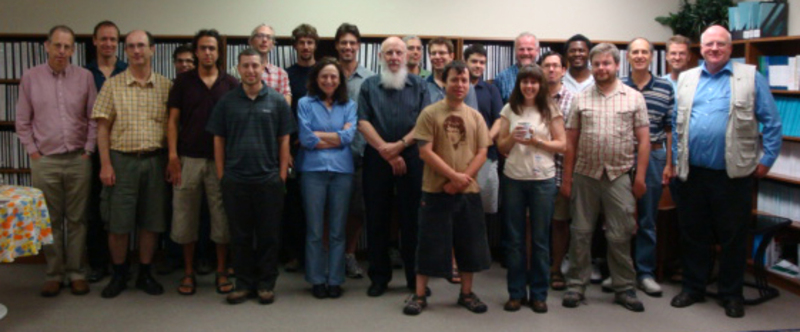Topological Complexity of Random Sets
August 10 to August 14, 2009
at the
American Institute of Mathematics,
San Jose, California
organized by
Robert Adler,
Jonathan Taylor,
Shmuel Weinberger,
and Steve Zelditch
Original Announcement
This workshop will be devoted to the developing field of random maps between
manifolds and their geometric properties.
Three specific areas of interest will be:
- Defining interesting probability measures on spaces of maps beween two manifolds. In special cases, for example when the image manifold is a vector space or a projective space, there are natural Gaussian or Fubini-Study type measures. Other special cases arise when the space of maps is finite dimensional, depending on a `complexity parameter', and the interest is in
understanding the behavior of the maps as the parameter becomes large. We plan to go beyond these known cases, discussing more general models of mapping spaces and investigating wider and newer classes of models, including models for describing random knots.
-
Maps can be used to define random sets, such as the inverse image of a point or a submanifold under the random map, or the zero set of a random function or vector of functions. One of the focal points of the workshop will be to study the statistics of geometric and topological invariants of such random sets, ranging from their Euler characteristic and number of components to their homology structure and (possibly) spectral invariants. Furthermore, random
metrics defined by pull back under random maps will be investigated.
- A specific class of random manifolds are the high level excursion sets of vector valued functions, i.e. inverse images of exteriors of balls of large radius. If the functions are characterised by a complexity parameter, this radius is often chosen to depend on it. While there is a significantly developed theory of high level excursion sets, there are still many interesting open problems. For example, a phenomenon that has often been observed, but does not as yet have a mathematical explanation, is that plots of Gaussian Euclidean plane maps with a narrow spectrum exhibit patterns of one dimensional filamentary structures in the high values of
the process.
The geometry of random maps has found a wide variety of applications,
from medical imaging and dimension reduction to cosmology and mathematical physics. A background theme to the workshop will be these applications and the challenges they present.
Material from the workshop
A list of participants.
The workshop schedule.
A report on the workshop activities.
Papers arising from the workshop:

